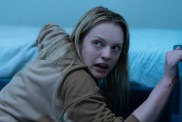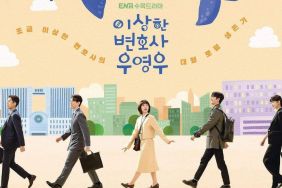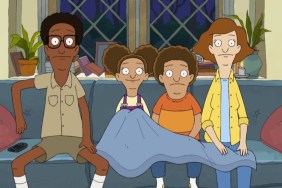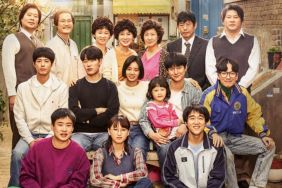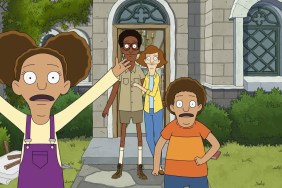The Central Park Five (Sundance Selects)
Directed by Ken Burns, Sarah Burns and David McMahon
Starring Raymond Santana, Kevin Richardson, Yusef Salaam, Korey Wise, Antron McCray, Ed Koch, David Dinkins
Rating: 9/10
We’re going to do something a little different this week, because while we could very well write a glowing review of this fascinating doc that I first saw on my very last day of this year’s Toronto International Film Festival, and was absolutely blown away by it, I don’t think it could do as much justice to the movie as speaking to the filmmakers.
On April 19, 1989, a woman’s body was found in Central Park after been raped and beaten brutally, although she was still alive. Around the same time, police had brought in a number of teenagers who had been involved with a bit of rowdiness in the park that night and they were soon being coerced into confessing their involvement with the woman’s rape. Four of them were convicted and sent to prison for seven years, the fifth was in prison for 13 years until in 2002, a convicted rapist ran into the latter and realizing how he had suffered despite his innocence, came forward to confess that in fact, he was responsible for the jogger’s rape and murder. The five men were exonerated, but by then the damage had been done to their lives and reputations, as everyone spent over a decade believing them to be guilty.
Outraged by the fact that these young men lost their youth in the New York prison system, Sarah Burns, daughter of award-winning documentarian Ken Burns (“Baseball,” “The Civil War”), wrote the book “The Central Park Five: The Untold Story behind One of New York City’s Most Infamous Crimes,” released earlier this year, but at the same time she began working with her filmmaker father and husband David McMahon to bring their story to film.
The resulting film The Central Park Five is absolutely fascinating, especially for someone who was living in New York at the time and remembers how the media pounced on this story and used it to vilify the five young men for what they did. Those were different times and New York was still a fairly gritty and dirty place pre-Giuliani, and the fact that a white woman was beaten and raped by young black men caused a real rift in the races that continued for quite some time.
Over the course of two hours, you get to hear all five men tell their story in-depth, about how they were in the park that night and were brought in by police and tricked into confessing over a marathon interrogation. Scared and unknowledgeable of their rights, they said what they need to say in hopes of being released, only to get themselves convicted. It’s really interesting that this movie is being released the same year as Amy Berg’s West of Memphis, a movie that examines the evidence that three West Memphis youths were convicted and imprisoned wrongly for the murder of three young boys.
Last week, ComingSoon.net had a chance to sit down for two separate interviews, one with Sarah Burns and her husband David McMahon, the other with her father Ken Burns, to find out more about how this project came together and why it’s such an important work of documentary filmmaking by how it can contribute to the Central Park Five getting justice.
“I was initially interested in this story and wrote my undergraduate thesis about the media coverage of the case,” Sarah Burns explained to us. “Then I kind of couldn’t let it go until not long after I began working on the book, we all decided we wanted to make the film as well. The book and the film provided such different opportunities for telling the story and it felt like the story deserved each of those tellings. By doing the film, it gave us this opportunity to interview the five and hear from them in their own words, which I think is a really important part of our film. That seemed like something the book couldn’t accomplish that the film could and that made it feel worthwhile.”
“I was aware of the thesis,” her famous filmmaking father told us later. “I thought it was great and I remember the original case and was outraged, the way everyone was, that our city was falling apart, and then I was outraged that their innocence thirteen years later got none of the coverage it deserved and that my daughter was interested in writing about it, meant that the apple had not fallen far from the tree. Many years later, she would write the book and send that first draft to me. I was marking up the pages, but going, This is a great story and we should do it.’ It fits in with all of my other work in so far as every time I’ve explored a subject in American history, you can’t help but run up against race or justice or class or all of the things that are engaged in this story.”

It was equally organic for her husband, David McMahon, to get involved with making the movie. “As her husband, I had been reading drafts and following her through the process of writing the book and I had worked with Ken on and off for years and that’s what we do, we make films, so this one just seems so right for this telling, putting them on camera and letting them tell the story in their own words, bringing New York City of the 1980s to life. We’re often used to digging up black and white photographs from another era, not having our subjects alive to tell their own story, so in this case we could find old video footage of New York in the 80s and really set this as a backdrop.”
“We have no narration in this filmall my other films have narration that have been broadcast on PBS,” Ken Burns continued, talking about the differences between The Central Park Five and his previous work. “The other films have perhaps at times a more stately pace. This one at least begins hitting the road running with the energy of a newly-minted hip hop movement, and the fast cutting that was of that era, but it also settles into the same pace once you’re sitting inside an interrogation room and staring into the faces of these now in their 30s young men who were falsely accused. Once you see the video tape confessions, once you understand about the trial, you begin to look at it and you begin to realize that film is a great polygraph.”
His daughter spoke about how she approached the five guys and convinced them to do interviews, first for her book and then the movie. “I think I contacted them first about the book and started to get to know them. They were all willing to do that. I think it took them a while to get comfortable enough to start really talking about some of the tougher stuff. They wanted to participate – it was important to them. I don’t think anyone had really asked them before. At some point, we said, Oh, we also want to make this film,’ and by the time we actually sat them down for interviews for the film, they were comfortable with me and the idea of us telling the story this way. It was certainly difficult and emotional, but it seemed to me that it was cathartic for them.”
McMahon continued, “At least at that point, they were aware of the direction and that you were interested in the facts and telling the story that hadn’t been told before, the true story about what happened to them. Maybe there was more trust gained in the book process that permitted to come on.”
“By the time we sat down with them for the film, they were more comfortable opening up then they might have been if we just said, Hi, we just want to make a film,'” Sarah agreed.
Ken told us why he became invested in helping them get the film made, bringing his vast experience and resources to the table. “At the heart of it, it’s a good story. It’s a tragic story but it’s a good story and you’re drawn to the complexity of it, the layers, and the idea for us to do something differently, to engage my daughter and son-in-law in a way that we’re equal partners in this film, co-directors, and we can bring some stylistic refreshment to what I’ve been doing for the last 37 years.”
McMahon talked about how it worked out making a film with three directors. “We worked with an incredible editor named Michael Levine who had worked on Ken’s Baseball’ series 15 years ago and then worked on a number of other terrific documentaries. We gathered all the material–the footage, the photographs, the live cinematography we shot when we did the interviews–and left him with a sense of it. It was really over the course of 11 months and meeting him regularly–all of us in one room–that we wrestled with the details of this and argued out various points and we shaped the puzzle. Those were some of the most important days and in those cases, it was all of us, heads together, trying to figure out what the story was and what direction we needed to take it.”
Sarah talked about how the media exacerbated the situation when the five guys were convicted yet weren’t around to cover when they were exonerated. “Part of that problem with the media coverage is that it had been so rabid in ’89 and ’90 and was much quieter when the convictions were vacated. It wasn’t quite as good a story and doesn’t sell papers in the same way so we didn’t really hear about it. To this day, we talk to people all the time who think they know about this story or who remember a little bit as that wilding case’ – but they don’t know that they didn’t do it.”
Her father continued her thoughts and how the doc helps clear things up. “I think you can get to know these five over the course of these two hours, who they are, where they came from, what kind of humanity they have. These were all things that were denied to them. The press didn’t ask these questions at the time – nobody cared. They bought hook, line and sinker the narrative that these were a pack of wolves that were preying on innocent flesh.”

“There were papers and certain members of the media who remain invested in that original outcome,” David told us. “They had deep connections in the prosecutor’s office or the police station and were maybe reluctant to walk back the original conclusions they had come to, so you get headlines like Not so Fast on the Jogger 5′ in 2002 and maybe there’s a little bit of protectionism there that their friends in the offices worked towards these convictions were not ready to admit they had made a mistake.”
One of the truly shocking stories to come from out of the attention the film has gotten during its festival run, is that now the city that’s been engaged in a civil suit filed by the five accused men served the filmmakers with a subpoena to get their hands on all the research and information.
“We were disappointed that we didn’t have a chance to talk to the police and prosecutors,” Sarah said about trying to get the other side of the story. “We tried on numerous occasions, inviting them to speak to us and give us interviews. We either never heard from them or they declined, citing the civil suit as a reason they couldn’t or shouldn’t talk to us. Their lawyers advised them not to talk about it. The first time we hear from them is when they serve us with a subpoena.”
“They’ve had plenty of opportunities to tell their story,” she continued. “Even in 2002, when Reyes came forward and there was this opportunity to change course on that, there were public statements that time indicating that for the most part, those people on the NYPD are sticking with their original story on this, that the five did have something to do with the rape despite this new evidence. We wanted to make clear where they stand on this. It’s an important part of the story and probably why the civil suit has taken almost a decade.”
When asked if he felt this was about the money or about pride, McMahon responded, “I can’t say for sure what their motivations are, but it seems clear that people who worked towards these convictions, the prosecutors and police, that it was an important case and for many of them, it’s part of their legacy and maybe they have trouble facing the new facts and a reality that is in conflict with what they found in 1989.”
“Now that we’ve been engaged in the civil suit by the virtue of the city’s ridiculous subpoena of our outtakes and notes, you have to ask the question, Where’s the media here?'” Ken asked. “They folded at the time of the thing and then when the kids were innocent, they just neatly reported it (on page) D23. Now, when the city is using, what I believe, this extra-judicial subpoena, where’s the outrage again? Why hasn’t this case–the crime of the century–why can’t we close this? Why can’t we put this behind them, not just for the five of them and their families, but for the rest of us?”
In conclusion, Ken explained why it was important for them to make this movie, saying that first and foremost, it was about telling a good story, then added, “At the same, maybe by adding our voice, others may pay attention and add theirs and the net result is that we can come to some sort of conclusion, some sort of closure and some sort of healing can begin. To be called the Central Park Five for thirteen years was to be one of the worst human beings on earth. Once they were vindicated, it’s to become a legal limbo. Why doesn’t the term Central Park Five’ mean heroic people who stood up against the system and prevailed?”
The Central Park Five (Sundance Selects) opens on Friday, November 23 at the IFC Center, the Maysles Cinema and LIncoln Plaza in New York City. On Sunday, November 25 at 4PM, Sarah and David and four members of the actual Central Park Five will also be at an event sponsored by the Maysles at the Dempsey Center Auditorium at 127 west 127th Street to discuss the film. You can tickets for that unprecedented can’t miss event here.


